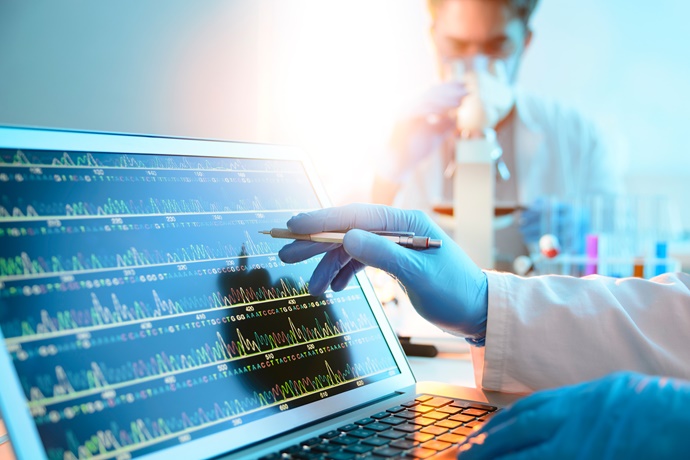The number of food contamination recalls continues to grow at a record-setting pace. According to Stericycle, a compliance company that specializes in providing services for recalled and expired goods, the amount of food recalled by the FDA rose from 1.4 million to more than 118 million units during the first half of 2016. Similarly, the USDA recalled more than 54 million pounds in the second quarter of 2016, an explosive increase from only 1 million units earlier in the year.1
What is causing this dramatic increase in food recalls, and should we expect this trend to continue? The answers to these questions lie in two significant – and interrelated – factors that are impacting food suppliers and manufacturers worldwide: more accurate genomic testing and stricter food safety regulations.
Whole Genome Sequencing and the GenomeTrakr Database
In large part, the exponential increase in food recalls is a result of government regulatory bodies’ growing use of Whole Genome Sequencing (WGS) to identify the source of the contaminants. Whole Genome Sequencing – the process of determining the complete DNA sequence of an organism’s genome at a single time – is revolutionizing the way foodborne pathogens are identified and tracked.
Since its introduction in 2008, Whole Genome Sequencing has become the FDA’s preferred method of identifying and tracking pathogens from food samples. WGS is more accurate than traditional methods such as Pulsed-Field Gel Electrophersis (PFGE), which has enabled the FDA and CDC to more precisely identify the source of a contamination. The FDA and CDC can now pinpoint the origin of a contaminant using more precise, faster and less expensive means than in the past. As a result, not only can regulatory bodies identify the origin of small outbreaks, but they can also implement more stringent standards for compliance levels of pathogens.
Advancements in WGS testing over the past decade have led the FDA to create the GenomeTrakr database2, a catalogue of pathogens compiled with input from approximately 30 state, federal and university labs in the United States, along with more than 20 labs outside the country.3 The database is an open-access sphere of information that enables laboratories to quickly disperse specific information about a particular strain of pathogen. As a result, foodborne illnesses are being more easily tracked to a specific location, since genome sequencing for a specific pathogen varies by geographic region. As of August 31, 2017, the GenomeTrakr network had already sequenced more than 129,000 isolates that can accurately identify the origins of foodborne pathogens.4
Whole Genome Sequencing and Product Recalls
In the past, approximately one-third of outbreaks were never solved. Today, Whole Genome Sequencing is helping scientists review – and solve -- old cases of contamination and foodborne illness.
Moreover, the enhanced testing afforded by WGS has a significant effect on product recalls, increasing their complexity and geographic impact. As DNA analysis has improved, regulatory bodies are able to identify products worldwide that need to be recalled due to a pathogen. Specifically, Whole Genome Sequencing provides the ability to:
- Differentiate sources of contamination, even within the same outbreak
- Determine which ingredient in a multi-ingredient food harbored the pathogen associated with an illness outbreak
- Narrow the search for the source of a contaminated ingredient, even when the source is halfway around the world5
- Determine unexpected vectors for food contamination
The Economic Impact of Global Product Recalls
In 2016, over 12 percent of food recalls crossed beyond the boundaries of the United States.6 Companies that have expanded into global markets are facing additional standards and rules from regulatory bodies in foreign countries. As a result, if a recall does occur, the impact is exponentially larger, both in terms of costs and exposure. According to Tyco Integrated Security, the average cost of a food recall to a company is 10 million dollars.7 This amount includes only the direct costs for identifying the cause of the contamination, providing notification of the recall, and retrieving, storing, and destroying the products; it does not include the cost of potential litigation or any public relations response to a recall that a company may undertake.
Ultimately, ingredient exposures have the highest risk factors. As this article in the June 2016 issue of The Edge illustrates, the contamination of a single ingredient – in this hypothetical example, sugar – can multiply the effect of a recall, as the contaminated sugar is incorporated into different consumable products. In this illustration, a single recall resulted in a 2.5-million-dollar loss for the first affected party, but ballooned into more than a 16-million-dollar loss affecting 11 different companies.
Summary
According to the CDC, foodborne pathogens account for about 48 million illnesses, 128,000 hospitalizations, and 3,000 deaths each year in the United States.8 The impact of Whole Genome Sequencing on the food production industry can be considered revolutionary. In today’s markets, it is important that companies consult experts who can explain the implications of Whole Genome Sequencing and determine the best way to address risk factors and the potential for recalls. The AmWINS product recall team can provide a specialized food contamination policy that can offer coverage for the following:
- First and Third Party Recall Costs
- Replacement Costs
- Brand Rehabilitation
- Loss of Gross Profit
- Third Party Financial Losses
As WGS technology continues to develop, it will play an even greater role in the protection of consumers and the accountability of food producers. In light of this trend, it is essential to properly protect your clients in the event of a recall, which has the potential to financially cripple or bankrupt a company.
1 http://www.stericycleexpertsolutions.com/wp-content/uploads/2016/08/STCExpertSOLUTIONS-IndustrySpotlight-US-Q22016-FINAL.pdf
2 http://www.fda.gov/Food/FoodScienceResearch/WholeGenomeSequencingProgramWGS/ucm403550.htm
3 https://www.fda.gov/Food/FoodScienceResearch/WholeGenomeSequencingProgramWGS/ucm403550.htm
4 https://www.fda.gov/Food/FoodScienceResearch/WholeGenomeSequencingProgramWGS/ucm403550.htm
5 https://www.fda.gov/Food/FoodScienceResearch/WholeGenomeSequencingProgramWGS/ucm422075.htm
6 http://www.stericycleexpertsolutions.com/wp-content/uploads/2016/08/STCExpertSOLUTIONS-IndustrySpotlight-US-Q22016-FINAL.pdf
7 https://www.tycois.com/wps/wcm/connect/ab4fd1f4-4aa2-45a3-a4f1-b91b36539e0f/LT1000-02FoodDefenseWP_Part2_hireresDigital.pdf?MOD=AJPERES
8 https://www.cdc.gov/foodborneburden/2011-foodborne-estimates.html
ABOUT THE AUTHOR
Kyle Markuson, Product Recall broker with AmWINS Brokerage of the Midwest in Chicago, contributed to this article.


